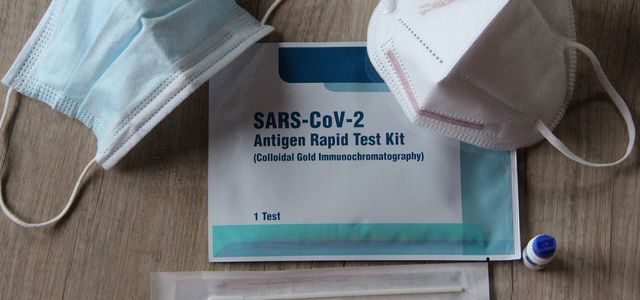
More and more people are doing a corona self-test at home. After the test, the question arises: what to do with the many individual parts of the test? Can I dispose of the test and separate the garbage as usual – or do special rules apply due to a possible risk of infection?
Those who care about the protection of the environment: they are currently flinching at the growing mountains of rubbish: Sustainable, because reusable fabric masks to protect against the coronavirus are no longer in demand, everyone only wears surgical or surgical clothing. FFP2 masksthat are not washed, but disposed of after just a few wearings.
As of recently, anyone can: r buy a self-test in the discounter, pharmacy or online and test at home whether there is a corona infection. This creates additional waste. If you carry out the corona rapid test at home, after the (hopefully negative) test, you are faced with the question: How should all the many individual parts that make up such a test kit be disposed of?
The self-tests for laypersons usually consist of a test stick for the smear, the vial with the solution, a plastic pipette, the test cassette as well as the instructions and an outer packaging.
To protect the environment and health: dispose of self-tests correctly
We did some research and found out that the waste that is generated when making compromises in the home environment has it Robert Koch Institute (RKI) classified as “household waste”. The viral load is considered to be low in the self-tests – nonetheless, the rapid test waste should be in a tear-proof, moisture-proof and tight container packed over the Residual waste bin be disposed of. The Federal Environment Agency and the Robert Koch Institute (RKI) recommend this in their joint Recommendation on current waste disposal issues.
Dispose of corona self-tests: Can the packaging be in the yellow sack?
As the viral load is low and neither the outer packaging nor the instruction leaflet come into contact with the sample material Outer packaging of paper or cardboard as well as the Package insert in the Paper bin. Plastic packaging is allowed in the yellow bag, says Michael Jedelhauser, Advisor for the Circular Economy at the Naturschutzbund Deutschland (NABU) to Utopia.
If the quick test turns out positive, it is safer to dispose of all waste well packaged with the residual waste. The next step in this case is: make an appointment for a PCR test to check the result of the rapid test.
If you are also wondering what to do with used masks, disposable gloves and rubbish that is generated by infected people, here are the answers at a glance:
How are surgical and FFP2 masks disposed of?
OP and FFP2 masks contain synthetic fibers and are not recyclable. This means that they do not belong in the yellow sack or the yellow bin and also not in the paper waste. Just throw your used mask into the Residual waste bin!

Important to know: You should have masks definitely not in the toilet wash down. In contrast to toilet paper, the fleece does not dissolve and can lead to blockages in the sewer system.
How can I properly dispose of disposable gloves?
Disposable gloves are made of latex, vinyl or nitrile. In all cases, the used protective gloves do not belong in the yellow bin, but the residual waste. “That not only has to do with hygiene, but also with the fact that gloves are not considered packaging,” explains the “Waste separation works” initiative.
And what about the corona garbage that is generated by infected people and in quarantine?
Anyone who has been infected with the coronavirus or is in quarantine at home should put any waste they have come into contact with in a plastic bag, close it and dispose of it with the residual waste. Hygiene waste such as handkerchiefs etc. must never be disposed of with paper or organic waste. This is how you protect the employees of the disposal companies from possible infection.
You should collect glass waste, returnable bottles, batteries, etc. and only recycle them as usual when you are healthy again or the quarantine has been lifted.
Safety first …
The amounts of waste generated by disposable masks and corona tests are enormous. But that shouldn’t prevent you from regularly replacing your mask with a new one and from doing a rapid corona test. In this case, health and safety are paramount.
However, there are many other points where you can easily do something to protect the environment in everyday life:
Read more on Techzle.com:
- 11 things we can learn about sustainability in the Corona crisis
- FFP2 masks: 5 common mistakes to avoid
- FFP2 masks at Stiftung Warentest: Rossmann and dm models are not recommended
- Waste separation & recycling: this is how you separate your waste properly